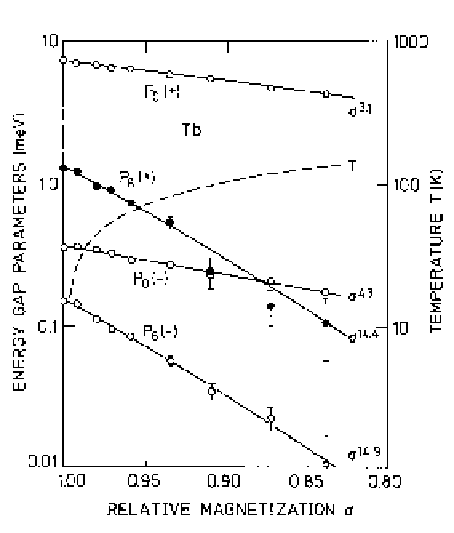Environmental Engineering Reference
In-Depth Information
Fig. 5.5.
Anisotropy parameters in Tb as a function of the relative
magnetization, deduced from results of the type illustrated in Fig. 5.4.
The
σ
3
-dependence of
P
0
(+) on temperature is consistent with the
σ
2
-renormalization of the dominant two-fold term in (5
.
4
.
22
a
) predicted
by the Callen-Callen theory, but a comparison with the studies of dilute
Tb-alloys by Høg and Touborg (1975) suggests that a large part of the
axial anisotropy may have its origin in the two-ion coupling. The effect
of the two-ion anisotropy is directly apparent in that part of the axial
anisotropy
P
6
(+) which depends on the orientation of the moments in
the basal plane. If only single-ion anisotropy of the type which we have
considered is important,
P
6
(+) in (5
.
4
.
22
b
) is directly related to the crit-
ical field necessary to turn the moments into the hard direction. How-
ever, the experimental value of
P
6
(+) bears little relation to
gµ
B
H
c
/
6,
even having the opposite sign. We can express this discrepancy by the
parameter ∆
M
, defined by
gµ
B
H
c
/
6
.
∆
M
=
P
6
(+)
−
(5
.
4
.
23
b
)
The influence of ∆
M
can be directly seen in the results of Fig. 5.4, since
it is responsible for the difference between the slopes when the field is
applied in the easy and hard directions. Although it could in principle be
due to higher-rank
γ
-strain magnetoelastic terms, the large magnitude

Search WWH ::

Custom Search